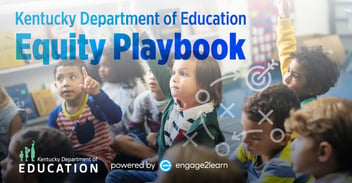e2L Partners Consistently Experience Double-Digit Gains in Student Achievement. Here's how. . .
Have you ever felt the weight of responsibility in a professional role? Responsibility for results of any kind? There are numerous professions and roles within different organizations, that are ultimately responsible for various types of results. With this responsibility, there is pressure from a number of perspectives; a number of different stakeholders who apply the pressure; the expectation for those results; and the accountability demanded for the production of those results. In every case, the weight is heavy and formidable. This is certainly the reality for professionals in the field of education.
One of the most discouraging things to hear a campus principal describe is the disappointment they feel when student achievement doesn’t meet the required level of expectation. In a recent meeting with principals who are leading campuses that have room for improvement, it was heartbreaking to hear their common lament for the lack of improvement, despite all of the hard work their teams had put in. This revelation was significant; it was heavy. They were disappointed, but each of them solely assumed the responsibility for the results and expressed a sense of sorrow, not for themselves, but for the teachers and students they served. They lamented the fact that everyone had worked so hard and failed to achieve the desired results, and they expressed their greatest desire to see their teams and their students realize the reward of all the hard work they had put in.
Pressure to produce is a consistent theme throughout the entire system of school professionals, applied to every role from the superintendent to the teacher and, most unfortunately, to students. Without a doubt, superintendents feel this kind of weight; however, this pressure can be by far the most consistently present and significantly heavy for the role of the campus principal. I feel confident making this assertion because I have served students as a campus administrator, and felt the unrelenting pressure to produce results.
The pressure is greatest for principals for a variety of reasons:
- They are designated as THE LEADER of the campus. This means the campus principal is ultimately responsible for the outcomes of that particular campus. As a result, there is a high level of ownership and pressure that most campus principals apply to themselves; I know I did.
- The pressure and expectations campus leaders are subjected to come at them from multiple angles. They are responsible for district initiatives that oftentimes they aren’t a part of deciding to implement. They are responsible for supporting all of the needs of their individual teachers. They are responsible for meeting the expectations of parents and community members. Finally, they’re responsible for meeting the expectations of the students they serve every day.
- While campus leadership is consistently cognizant of the expectations of each of the above-mentioned stakeholders, it is often true that those expectations and the pressure to achieve from each group aren’t always the same; therefore, meeting all of the expectations is increasingly difficult.
At the heart of every principal I’ve ever known, and this was true for me when in that role, is a sincere and significant desire to serve ALL of the identified stakeholders well. Principals want to support the vision of their superintendent, their community, and their school board. They want to serve well the faculty and staff serving on the campus they lead. They want to serve well the parents who send their very best students to the campus each and every day and, most importantly, they want to serve well the students whose lives they impact through their leadership. This sincere desire and passion for serving as a leader bear the weight of all of the expectations and disparate desires of each stakeholder group.
So, how can we help campus principals truly realize the reward of all of their hard work? We can start here:
- Understand why most school improvement efforts fail
- Reframe our understanding about school improvement
- Structure the efforts to be laser-focused
Improvement Failure
Through our extensive experience working with hundreds of public schools, we identified three key reasons that most school improvement efforts fall short:
- Too Many Programs – Oftentimes, the pressure to improve causes a bit of panic, which results in initiative overload. The idea of doing as many things as possible is often counterproductive and results in the feeling of “We are working so hard, but not getting the results to match!”
- Too Technical – People mistakenly think school improvement is about changing outcomes, but the reality is that it is really the changing of behavior. That change has to occur in both the adults and the students. No “program” consistently produces that in and of itself.
- Too Short-Sighted – Talent transformation doesn’t just happen after a single training. In fact, the research will bear out that training alone yields from 0-5% transfer of behavior to the classroom. Transforming daily practice can only occur effectively if district and campus leaders are willing to commit to the last and hardest mile of the change process: ongoing, job-embedded coaching for each and every teacher implementing the change.
When we have too many programs that are technical in nature, there just isn’t time to provide the coaching required for true talent transformation to fully realize the improvement from all of the efforts. This results in A LOT of activity, people working VERY hard, but not much achievement relative to the expectations. This is, in and of itself, completely demoralizing and discouraging, and serves as the foundation for burnout and dissatisfaction in the profession as a whole.
Reframe School Improvement
In a recent article, entitled School Improvement Through Talent Transformation, engage2learn poses this critical question, “What if you could transform your school/district without firing anyone, adding worksheets, direct teach, or pulling learners out of classrooms?”
This is a great question because these strategies are completely commonplace. The reality, however, is that these strategies are not sustainable and most importantly, rob so many students of the experience they deserve. Additionally, the article stated:
“In order to raise achievement scores, schools typically respond by doubling down on worksheets, tutorials, whole-group direct teach, and moving teachers around to more needy campuses. While these approaches may improve some scores for some students, historically, they have failed to collectively lift and fill the achievement gap. More than this, they fail to address deeper gaps in key indicators for life-long success, namely language acquisition and soft skills. By employing more worksheets and whole-group direct teach and test prep, learners who are desperately needing life-ready skills, are mostly deprived of experiences that facilitate the acquisition of those skills.”
See this white paper for more information about the skills gap: “Creating Equity by Closing the Learner Experience Gap.”
So, if these strategies are ineffective, or at least not really what is best for students, what can a district or campus leader do that is proven to work and that provides the experience learners desperately need but still produces the results demanded? The answer is to become laser-focused!
Laser Team Approach
e2L partners with districts all over the state and utilizes a process we call a Laser Team Approach for school improvement. Fundamentally, the Laser Team Approach is targeted intervention of either a campus, a grade level, or a content level across multiple campuses, through job-embedded coaching of campus teachers, focused on seven (7) of our research-based High-Yield Best Practices. These best practices are based on all of the research we all know and love, but what engage2learn has done to take them to the next level, is codify those practices.
We have defined the actual behaviors associated with designing and facilitating those practices in the classroom codified them into actionable rubrics. These rubrics, when paired with e2L’s personalized coaching, help to ensure teacher growth in those practices. We use the Engage Coaching System to support teachers through the growth process, which results in the only thing that will truly create lasting improvement of student achievement: higher quality, tier-1 differentiated instruction in every classroom, every day, for every learner, regardless of zip code.
This process has consistently helped our partners get double-digit student performance increases. Here are some of our most recent results our partners are celebrating…
We are so excited our partners are experiencing these results, but more importantly, however, is the shift in culture results like these produce. The change in narrative around the quality of everyday instruction, the results a campus achieves through this focused effort, and the positive experience students have every day, work together to lift the overall culture of the campus to an entirely different level. This is where lasting change takes place. This is how the trajectory of lives, students and adults alike, is changed. This is how a principal can look at every stakeholder, including themselves, and confidently and proudly declare, “WE’VE DELIVERED!”



